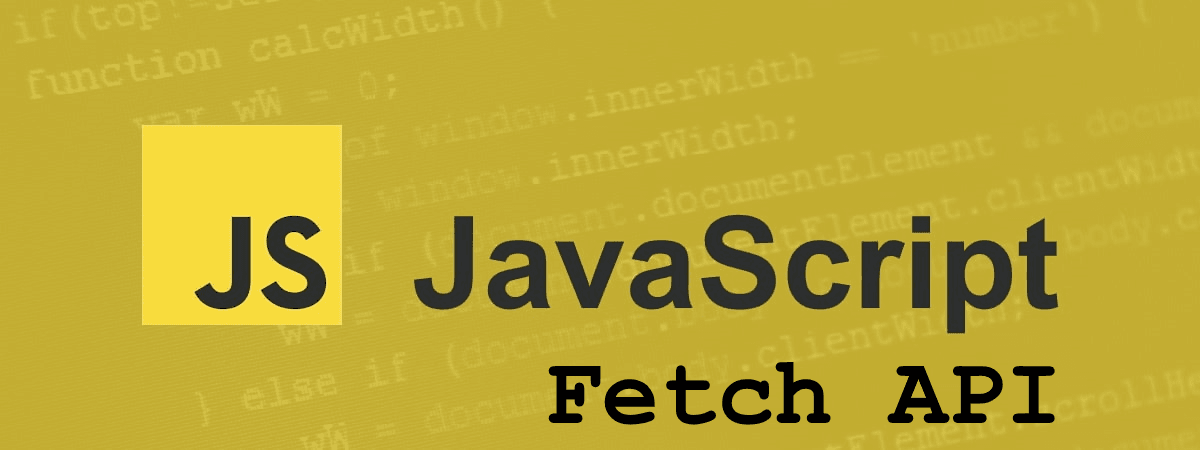
Fetch polyfill per Internet Explorer
Sui browser moderni è disponibile la comodissima FetchAPI tramite il comando JavaScript fetch:
Infatti questo browser non supporta la FetchAPI.
Ovviamente nei nuovi sviluppi ormai non è più necessario supportare IE in quanto la diffusione è quasi prossima a zero ma soprattutto non è da considerarsi sicuro.
Ci sono comunque casi, ad esempio le intranet aziendali, in cui Internet Explorer è ancora molto diffuso.
Se dobbiamo proprio supportare IE, nel caso di modifiche all'esistente, possiamo iniziare a familiarizzare con la nuova API tramite una funzione Polyfill come questa:
Per una alternativa alla Fetch API in Vanilla JS vedi Chiamata Ajax in JavaScript senza framework (XMLHttpRequest).
JavaScript: Fetch API
var url = "/demo";
fetch(url, {
method: "POST",
mode: "cors", // parametro vincolante per le chiamate cross domain
headers: { "Content-Type": "application/json" },
body: JSON.stringify({ value: 1 }),
})
.then((response) => response.json())
.then((data) => {
console.log(data);
})
.catch((error) => {
console.error(error);
});
Internet Explorer
Tutto bellissimo tranne per Internet Explorer.Infatti questo browser non supporta la FetchAPI.
Ovviamente nei nuovi sviluppi ormai non è più necessario supportare IE in quanto la diffusione è quasi prossima a zero ma soprattutto non è da considerarsi sicuro.
Ci sono comunque casi, ad esempio le intranet aziendali, in cui Internet Explorer è ancora molto diffuso.
Se dobbiamo proprio supportare IE, nel caso di modifiche all'esistente, possiamo iniziare a familiarizzare con la nuova API tramite una funzione Polyfill come questa:
JavaScript: Fetch API Polyfill
if (typeof fetch === 'undefined') {
/**
* implementazione PARZIALE di fetch per Internet Explorer
* parametro header.mode: non gestito, il default è 'cors'
* @param {*} url
* @param {*} options es. {method: "POST", mode: "cors", headers: { "Content-Type": "application/json" }, body: JSON.stringify({ value: 1 }) }
* @returns un oggetto con metodi then(...) e catch(...)
*/
var fetch = function (url, options) {
console.log('fetch polyfill by https://www.sgart.it');
var thenFunctions = []; // non gestisce catene di then o catch
var catchFunctions = [];
var returnObject = {
then: function (fn) {
thenFunctions.push(fn);
return returnObject;
},
catch: function (fn) {
catchFunctions.push(fn);
return returnObject;
}
};
var xHttp = new XMLHttpRequest();
xHttp.onreadystatechange = function () {
if (this.readyState === 4) {
this.ok = this.status >= 200 && this.status <= 299;
if (this.status === 200) {
console.log('then');
this.json = function () {
return JSON.parse(this.responseText);
};
var data = this;
for (var i = 0; i < thenFunctions.length; i++) {
var fn = thenFunctions[i];
data = fn(data);
}
} else {
var error = { status: this.status, message: this.responseText };
console.error('catch', error);
for (var i = 0; i < catchFunctions.length; i++) {
var fn = catchFunctions[i];
error = fn(error);
}
}
}
};
var method = options && options.method ? options.method : 'GET';
xHttp.open(method, url, true);
if (options && options.headers) {
for (var key in options.headers) {
var value = options.headers[key];
xHttp.setRequestHeader(key, value);
}
}
if (options && options.body) {
var data = options.body;
xHttp.send(data);
} else {
xHttp.send();
}
return returnObject;
}
}
Attenzione è un supporto parziale alle FetchAPI non gestisce le casistiche più complesse, ma funziona anche per le chiamate CORS.
Da usare solo per Internet Exploer, per gli altri browser non serve è supportata nativamente.
In ogni caso, se la funzione fetch è già presente, il Polyfill non viene applicato.
Da usare solo per Internet Exploer, per gli altri browser non serve è supportata nativamente.
In ogni caso, se la funzione fetch è già presente, il Polyfill non viene applicato.
Per una alternativa alla Fetch API in Vanilla JS vedi Chiamata Ajax in JavaScript senza framework (XMLHttpRequest).